In Capilano River Regional Park, it’s hard to believe you’re only 10km from the centre of Vancouver’s CBD. From Cleveland Dam, looking across Capilano Lake, the snow-capped twin peaks of The Lions loom large before you.
The park is one of the best places to visit in Vancouver for the views and tranquillity.
As you walk into the forest, the honking of cars and city noises are replaced by the roar of the river and wind whispering through the trees.
There are not many major cities in the world that are right on the doorstep of nature.
Vancouver certainly fits this description.
15 minutes from the city’s skyscrapers, you could be bathing in the healing energy of the forest.
Watch this video to learn the hidden language of the trees in Capilano River Regional Park and how man and nature can work in harmony.
Talking Trees Tour – Capilano River Regional Park
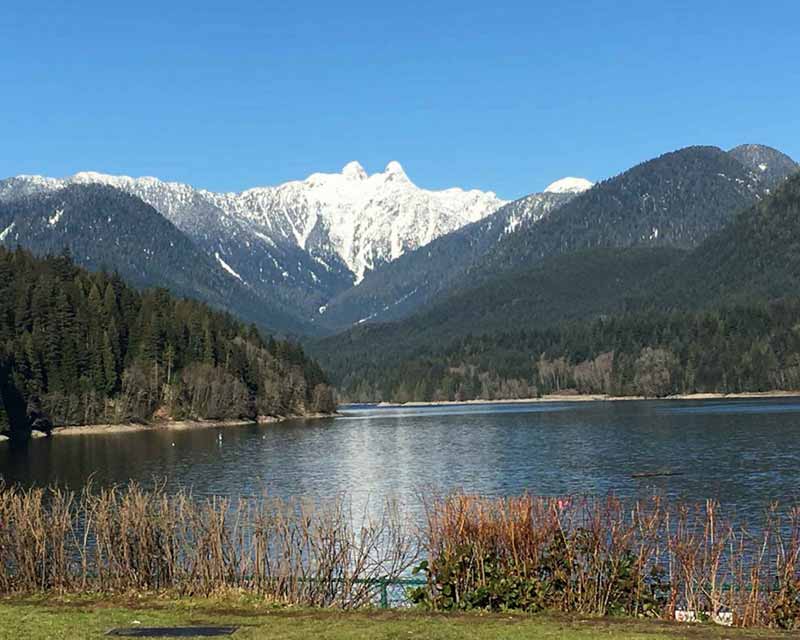
Vancouver’s North Shore is more than just a spectacular backdrop for the vibrant harbour city. Cougars, coyotes and bears pay occasional visits to people’s backyards.
Pods of orcas swim close to the shore.
The mountains and forests were where the Coast Salish people – Musqueam, Squamish and Tsleil-Waututh – lived off the land.
Over time, the Coast Salish people developed a relationship with nature and the land. So, learning about the way of life of British Columbia’s First Nations peoples will add a rich dimension to your Vancouver visit.
While on a hike with First Nations storyteller Candace Campo (whose ancestral name is Xets’emits’a) and her cousin Erica from Talaysay Tours, I discover Vancouver’s connection with nature. The tour in Capilano River Regional Park is a sharing of rich stories and ancient lore.
The Lions at Capilano Lake
Capilano River Regional Park is a beautiful park in North Shore Vancouver and a popular spot for locals and visitors.
It’s a scenic place to wind down, paint and take photographs of Vancouver’s famous mountains, known as The Lions.
The park is also the starting point for forest trails, where you can walk among the trees.
The forest at Capilano River Regional Park was once the home of the Coast Salish people, who utilised the plants and the trees in their daily lives.
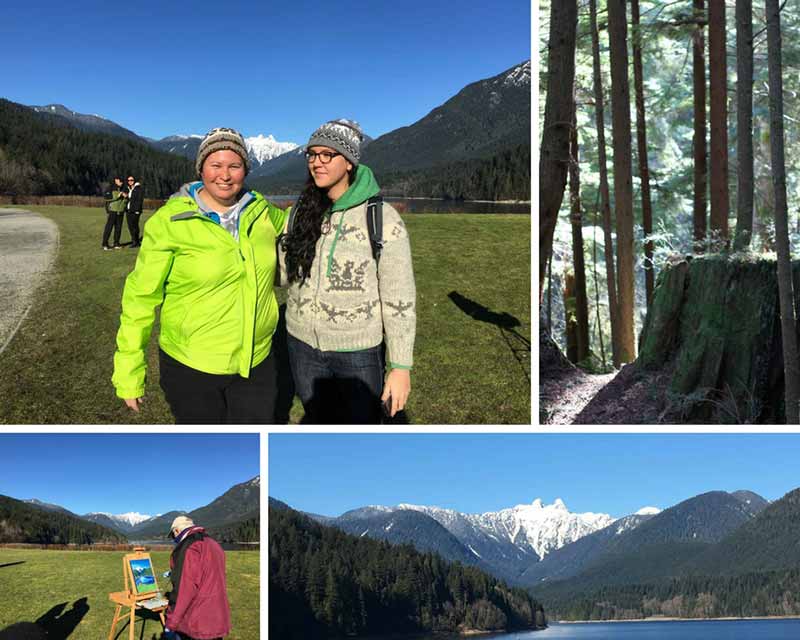
The Lions First Nation name
To the Coast Salish people, The Lions are legendary mountains known as the sisters or Ch’ich’iyúy Elxwíkn.
The legend involves the Sky Brothers, or Transformers, supernatural beings with magic powers to transform people into mountains and other things.
Many hundreds of years ago, the people in the area would often war with northern tribes. One time, a raiding party from the northern tribes kidnapped two daughters of a Squamish chief. As the raiding party made their way back inland, the daughters fell in love with their captors.
The Transformers wanted to peace and hope for the warring nations that had been fighting each other for eternity. To achieve this, they turned the sisters into two mountains peaks to represent peace and hope between the two nations.
So, next time you look at these two snow-covered peaks, think of them as more than a beautiful backdrop. The Lions are a symbol of peace and hope to the First Nations people of the land.
Decoding the Mystery of the Talking Trees
Growing up as a child, Candace Campo had a strong bond with the forest.
“I used to be a very quiet child and going into the forest, I can’t say I talked to the trees. But I actually felt I had a relationship with them,” says Candace.
The First Nations people believe that plants, animals and humans all have a form of intelligence as well as a spirit.
“When I got older, I learned a bit more about the ecology and science of the forest and the forest actually communicates which each other. So that’s why I named it Talking Trees,” she says.
What are the benefits of liquorice?
In Capilano River Park, liquorice ferns commonly grow on the Maple trees. This type of fern needs a soft bed of moss for its root system to thrive.
First Nations people harvest the liquorice root in spring and summer, for its potent medicinal qualities.
They brew the liquorice root into a tea, which is ministered as a medicine to relieve sore throats and colds.
Another way they use the root is to eat it plain or raw.
This works as an appetite suppressant, often used by Coast Salish women while they are out in the mountains picking berries with their children.
Mothers would give the liquorice root to their children to stop them from eating all the berries before they reached home.
This was a way to ensure that families had a reasonable stash of berries to stow away for winter.
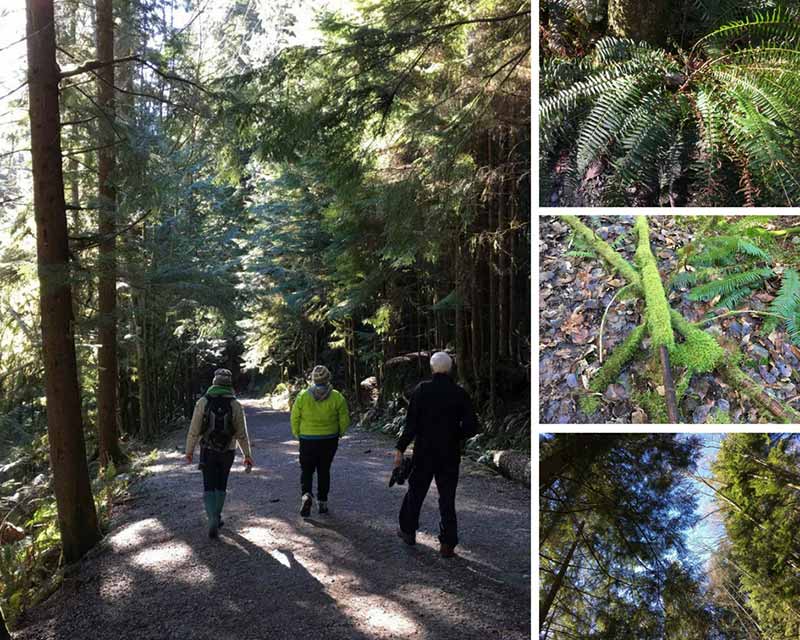
First Nations practices
Ferns played a big role in the lives of the Coast Salish First Nations people and every part of the plant is utilised.
The general practice of Canada’s Aboriginal people is never to waste, to use absolutely everything and take only what they need.
“We never had running water. If you had to clean fish or clean meat you didn’t have the luxury we have today of tap or running water to clean it up,” says Candace.
They harvested ferns to use as kitchenware or wax paper, to clean the blood off freshly caught fish.
The seeds are edible and highly nutritious.
To prepare them for consumption, the leaves are removed.
The stems are used for weaving and as part of their clothing.
Down by the Capilano River, Erica pulls out a flask of liquorice tea.
I swirl the pale yellow liquid in a metal cup, savouring each sip as the winter sun casts long shadows through the forest canopy.
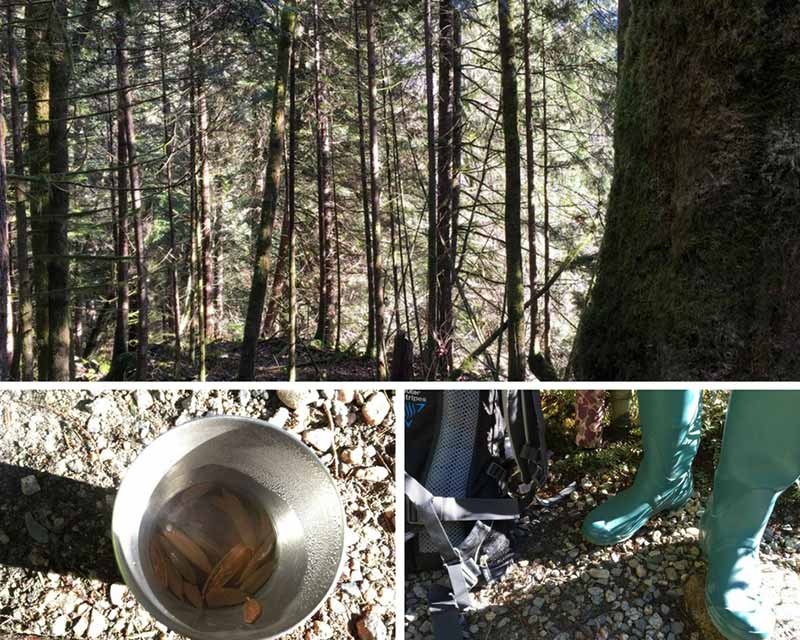
Learning about culture at Capilano River Regional Park
Trees in Capilano River Regional Park
In a raging forest fire, quite often, the only trees that remain standing are the Douglas Fir.
The reason for this is that Douglas Fir trees have a thick and dense bark that serves as its defence mechanism.
When the bark heats up, it will actually explode off the tree leaving the rest of the tree alive and standing.
Candace points out a Western Red Cedar stump that looks dead.
I’m surprised to learn that the stump is still alive.
Scientists have come to realise that while a stump may not be getting energy directly from the sunlight because it no longer has its main trunk and branches, its root system may still be intact and other trees will support the life of a stump by sending it nutrients.
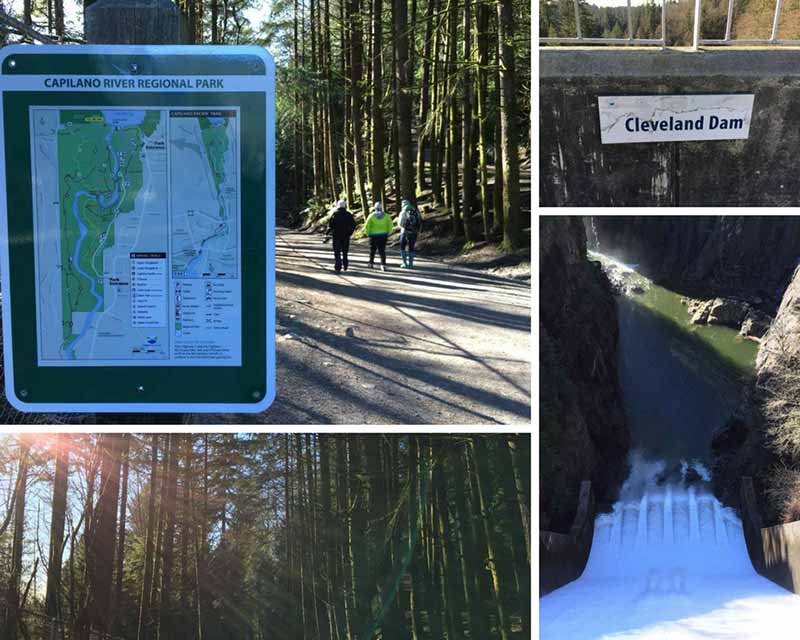
Talking trees
“I think our people knew this intuitively. The trees actually communicate through their root systems. The Birch tree – in the winter when it goes into hibernation – sends all its good nutrients to the Douglas Fir tree. They have a whole network and communication system,” she says.
Miraculously, the Western Red Cedar stump is also sustaining the life of a Western Hemlock tree that is growing inside it.
I gaze in wonder at the stump and look around me in awe at the forest, marvelling at the incredible support network of the trees.
I close my eyes and calm my thoughts, listening intently to the sounds of the forest.
For a brief moment, I’m absolutely sure the trees are talking to me.
Talaysay Tours Talking Trees Hike is available all year round. The Spoken Treasures Walk is a delve into Coastal Salish art and the secrets of the Stanley Park totem poles. The company also offers a range of authentic nature and cultural tours.
If you’re interested in finding out more about Canada’s First Nations people, there are over 200 First Nations experiences in British Columbia. From nature lodges and wildlife spotting to luxury spa resorts and wineries.
First Nation Art in Vancouver
Here are 10 more ways to experience First Nations culture and five places to see First Nations art in Vancouver.
1- Visit Bill Reid Gallery of Northwest Coast Art for amazing sculptures and jewellery of Haida artist Bill Reid.
2- Vancouver’s Museum of Anthropology at UBC has a terrific display of carvings and weavings, along with contemporary artworks
3- On your way home, spend some time admiring Vancouver International Airport’s eye-catching displays of First Nations art.
4- Coastal Peoples Fine Art Gallery in Gastown is the place for sculptures, masks, jewellery and other artwork by Aboriginal artists from British Columbia’s Northwest Coast.
5- Hill’s Native Art has carvings, prints, ceremonial masks and artists work in the gallery.
For more about Canada read:

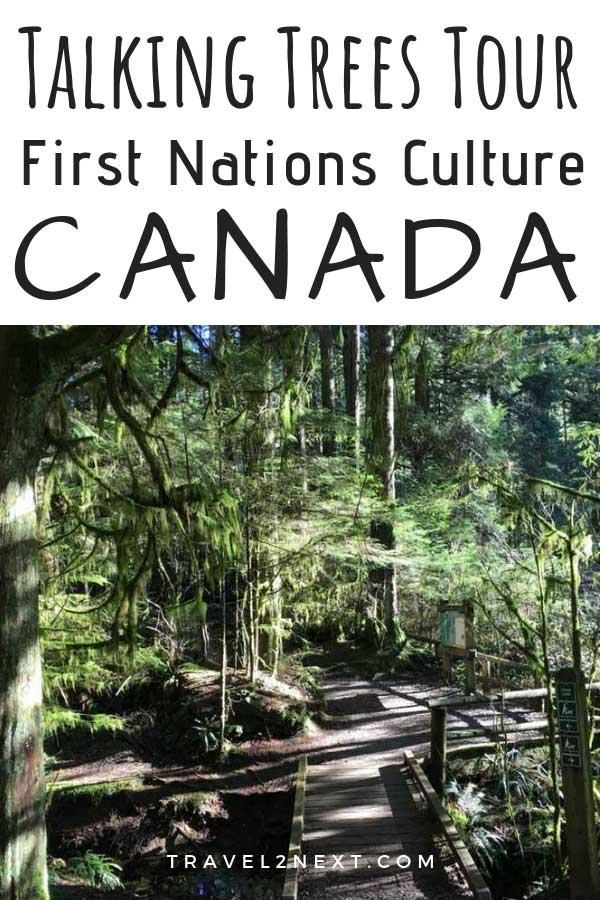
Plan Your Trip

Rent A Car – Find the best car rental rates at Discover Cars. They compare car hire companies to provide you with the best deal right now.

Find A Hotel – If you’re curious about this article and are looking for somewhere to stay, take a look at these amazing hotels.





